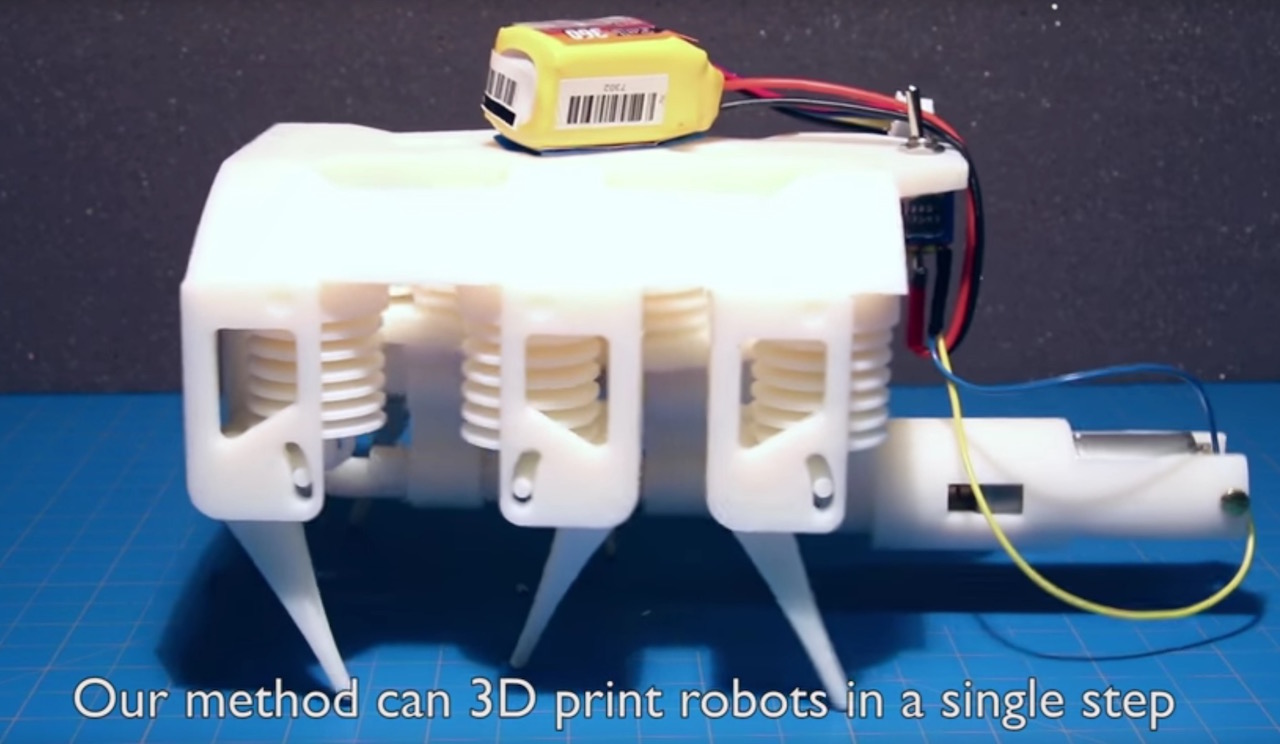
Though the field of robotics is evolving at a rapid pace, there is a good deal of progress to be made on almost every front.
Developments in intelligence and mobility tend to be the most intriguing to the average tech reader, e.g., Boston Dynamics’ previously clumsy ATLAS robot and Microsoft’s offensive tweeting AI program. However, just as important to the progress of robotics is how the robots are produced. Mass manufacturing is too costly for most specialty machines, and hand assembly is a time-intensive endeavor for researchers. In a single step, 3D printing may not only be ideal for prototyping robotic parts, but, as MIT demonstrates with a recent study, might also bring about new ways of manufacturing complete robots from multiple materials.
Researchers from MIT’s Computer Science and Artificial Intelligence Laboratory 3D printed a functioning robot in a single step by combining liquid and solid material. (Image courtesy of MIT CSAIL/YouTube.)
In a paper to be presented at the summer 2016 IEEE International Conference on Robotics and Automation, a team from MIT’s Computer Science and Artificial Intelligence Laboratory (CSAIL) describes researching fabricating multi-material robots in a single print. Devices—including a small hexapod and a soft rubber hand for the Baxter industrial robot—were able to function straight out of the printer, once batteries and motors were added. To accomplish this, the team used principles of hydraulics and a printer capable of combining solid and liquid materials at once.
To create a system capable of producing movement upon printing, the CSAIL group turned to hydraulics, designing structures that can be actuated based on the flow of liquids. By building such structures into a robot’s mechanics, the team determined that there would be less assembly required—that they could, in fact, fabricate the entire robot in one piece. To demonstrate their concept, the researchers created a hexapod robot that would use a single DC motor to pump fluid throughout the robot’s body to drive it forward.
In addition to ingenious design on the part of the CSAIL group, an essential component to the process was the 3D printer used to produce the robot. PolyJet technology from Stratasys has become somewhat synonymous with multi-material 3D printing, given the ability of these machines to deposit different photopolymer resins from various inkjet heads into a single build. In this case, the researchers used a Stratasys Objet260 Connex 3D printer.
Though they could use UV-curable resin for the robot’s overall structural material, the team relied on a “model cleaning fluid” sold by Stratasys as their hydraulic liquid. After overcoming a few hurdles, such as forcing the Connex to recognize this cleaning fluid as a build material, and rigging the inkjet heads to deposit the right amount of liquid, the team was able to 3D print a functioning robot.
Read more at ENGINEERING.com

